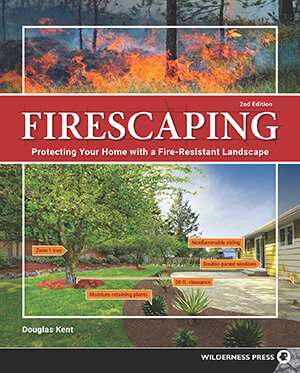Credit: California State Polytechnic University
The 2018 wildfire season was the deadliest and most destructive on record in California, according to CAL FIRE. Yet, after almost every wildfire, a house survives, somehow protected from the flames that consumed its neighbors.
Douglas Kent, an adjunct professor at Cal Poly Pomona's Lyle Center for Regenerative Studies, is the author of Firescaping (Wilderness Press), a book that provides achievable strategies to homeowners, prospective homeowners and city officials about how to create fire-resistant landscapes and harden homes against wildfire threats.
Firescaping is a form of landscaping and land management that protects a home from wildfire. The second edition of the book will be released Oct. 8 and has the endorsement of AAA Homeowners Insurance.
"We know the strategies that will definitely reduce the risk of structure loss and loss of life," said Kent. "There's a lot of things you can do with your landscaping. Statistically, the first 30 feet is essential. Just clearing that, you have a 90% chance of survival assuming your structure is fire hardened. If you go with the state law, which is 100 feet, than you have an incredible chance of survival."
In recent years, massive wildfires have entered urban areas in Santa Rosa, Butte County and east San Diego County. Smaller properties are even more at risk than large ones, said Kent, because backyards often have flammable items like patio chairs, toys, recyclables and other materials within 5 to 10 feet of structures. Homes are packed closer together, and wooden fences become freeways for fire.
"Most of California is fire country, and the Santa Ana winds can push a burning ember a mile to a mile-and-a-half in front of the fire," said Kent. This means anyone within two miles of a high-risk area is in peril of losing their home. They need to make sure that their roof is clean; their yard is free of dead, dying or diseased vegetation; and that they are not storing an excess of fuels."
Kent is an expert in ecological land management, the practice of designing and maintaining landscapes for specific environmental outcomes. Since 2005, he has toured, worked with and spoken to fire-scarred communities throughout California, most recently in Malibu. His work has been featured in the Los Angeles Times, Malibu Times, Sunset Magazine, Fine Gardening and National Wildlife.
Provided by California State Polytechnic University






















